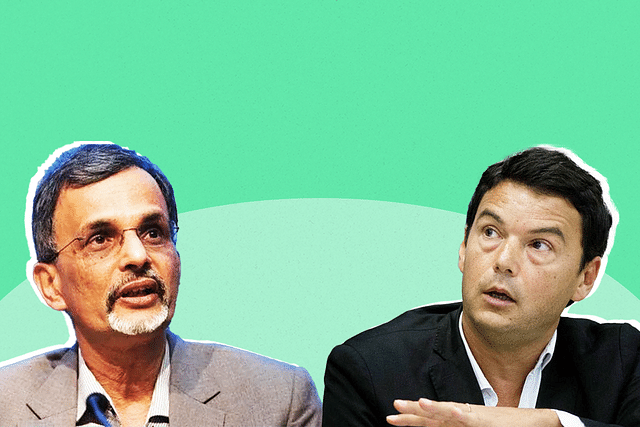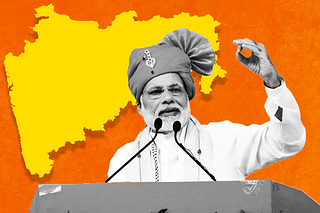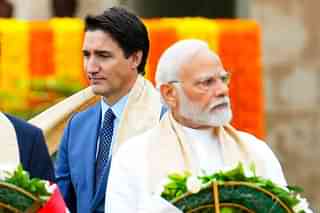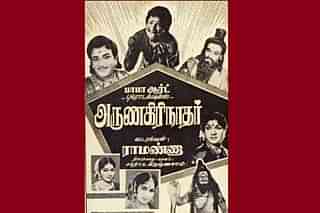Economy
'Could Have Spared Ourselves The Tedium Of Ploughing Through 85 Pages': CEA Anantha Nageswaran Rebuts Inequality Report On India
Swarajya Staff
Mar 27, 2024, 04:39 PM | Updated 06:45 PM IST
Save & read from anywhere!
Bookmark stories for easy access on any device or the Swarajya app.

A recent study by the World Inequality Lab claiming that economic inequality in India is at its peak has come under close scrutiny of several economists post its release.
In a working paper titled ‘Income and Wealth Inequality in India, 1922-2023: The Rise of the Billionaire Raj,’ a team of academicians comprising noted French economist Thomas Picketty have claimed that the top 1 per cent of India’s rich is wealthier than its counterparts in developed as well as developing countries like the US and Brazil.
According to Picketty and others, as of the end of 2023, India’s richest owned 40.1 per cent of the country's wealth, the highest percentage since 1961. Additionally, the paper claimed that their share in the total income was at 22.6 per cent, the largest since 1922.
“Rise in the personal wealth of India’s richest is juxtaposed with rising inequality that has skyrocketed since the early 2000s. India's modern bourgeoisie is now more unequal than the British Raj,” the authors said, drawing a parallel to the exploitative colonial rule.
Criticism Of The Inequality Report’s Findings
Among those rebutting the inequality report’s findings prominently is India’s Chief Economic Advisor (CEA) V Anantha Nageswaran.
In a recently published article in The Mint jointly authored with senior economist Deeksha Supyaal Bisht, Nageswaran noted that the paper relies on outdated numbers and that its methodology was erroneous.
More particularly with regards to its claims on widening rift between the rich and poor in India, Nageswaran stated that the study by Picketty and others fails to consider recent reports on the constantly expanding middle-class and NITI Aayog’s recent report which observed "remarkable decline in multi-dimensional poverty".
Here are some of the major issues put forth by CEA Nageswaran and Bisht against the report:
1) Questionable Choice Of Data, Problematic Interpretation
According to the Indian economist duo, the inequality report authors while deliberating on consumption expenditure relied on Periodic Labour Force Survey (PLFS) from 2017, ignoring newer data from the Household Consumption Expenditure Survey (HCES) 2022-23.
The reliance of the report's authors on PLFS data from the past and relegating findings from the recent HCES to a mere footnote is ‘surprising’ as per Nageswaran and Bisht considering that the numbers from the PLFS used by the authors had been red-flagged for data quality issues by the Government of India as well as the International Labour Organisation.
"In fairness to Piketty and his co-authors, we acknowledge a confession they made, even though they have tucked it away in a footnote," Nageswaran and Bisht write, adding, "That is a QED moment. Now, if only they had put it right up front, we could have spared ourselves the tedium of ploughing through some 85 pages."
Apart from this, according to Nageswaran and Bisht, the attempt of the inequality report’s authors to assess wealth distribution at the top end using data from Forbes’ and Hurun’s lists on India’s rich is questionable. The Indian economist duo pointed out that such lists on India’s rich also consider the ‘market capital’ apart from the personal wealth of India’s top industrialists and corporate honchos.
Since market capital is subject to changes in the stock prices and since whether it should be considered ‘wealth’ is debatable, considering this, Nageswaran and Bisht note that it is problematic to juxtapose wealth numbers from such lists against that of those lower in the income pyramid.
2) Tax Compliance Versus Income Inequality
Of the several datasets referred and cited by the authors of the inequality report to highlight increasing inequality in India are the numbers for income tax stretching back to 1920.
According to Nageswaran and Bisht, the rise in tax contribution figures of the top 1 per cent is due to improved tax compliance over the years which wasn’t the case in the past. Thus, as per the senior economist duo, improved tax compliance may skew tax data towards higher incomes, but it doesn’t necessarily reflect increased income inequality.
The inequality report’s claim of the Indian tax structure being ‘regressive’ was also countered by the economist duo. According to them, the report failed to consider recent studies by noted economists which point that the tax structure in India is ‘progressive’ and that the tax contributions had played an important role in reducing the Gini coefficient (which is a measure for inequality), particularly in the case of health and education.
3) Overlooking Middle Class And Decreasing Multidimensional Poverty
Similar to what has been pointed out by the critics of the inequality report, Nageswaran and Bisht note that the authors by focusing solely on the top 1 per cent overlook India’s growing middle class, which plays a significant role in the country’s economy.
The senior economist duo, citing estimates prepared by PRICE, noted that the Indian middle-class had doubled in size in the past decades and currently comprises 31 per cent of the Indian population. This is supposed to reach 61 per cent by 2046-47.
Apart from this, Nageswaran and Bisht note that ‘absolute poverty’ was a better indicator than ‘inequality’ since the latter is relative. Referring to the NITI Aayog’s National Multidimensional Poverty Index, 2022, the senior economist duo pointed out that 248 million Indians had escaped multi-dimensional poverty in the past decade. They also said that India was on the way to reduce multi-dimensional poverty by half well before 2030.
4) Past Allegations On Picketty's Tendency To Cherry-Pick
Along with several inconsistencies, neglect of recent data sets and erroneous assumptions in the report authored by Picketty and others, CEA Nageswaran and Bisht pointed out that similar reports by Picketty from the past are replete with ‘incorrect claims’.
The senior economist duo noted that numerous scholars in the past have critiqued Piketty’s work, highlighting errors in historical facts and methodological choices and a tendency to cherry-pick data to arrive at favourable conclusions.
Notably, in light of allegations against Picketty, Nageswaran and Bisht referred to a recently published study on income inequality in US by Gerald Auten and David Splinter.
In this paper, Auten and Splinter observed that using US tax data correctly showed lower income shares for the top 1 per cent rich. The study also noted that after-tax top income shares have changed little, which is in contrast with Piketty’s findings on inequality in the US.
CEA Nageswaran censured sections of Indian media for ‘lapping it up’ by forgetting that the report wasn’t peer-reviewed nor was it published in any reputed journal.
Also Read: Report On Inequality In India Under Fire For Relying On Dubious Assumptions
Save & read from anywhere!
Bookmark stories for easy access on any device or the Swarajya app.
Introducing ElectionsHQ + 50 Ground Reports Project
The 2024 elections might seem easy to guess, but there are some important questions that shouldn't be missed.
Do freebies still sway voters? Do people prioritise infrastructure when voting? How will Punjab vote?
The answers to these questions provide great insights into where we, as a country, are headed in the years to come.
Swarajya is starting a project with an aim to do 50 solid ground stories and a smart commentary service on WhatsApp, a one-of-a-kind. We'd love your support during this election season.
Click below to contribute.





